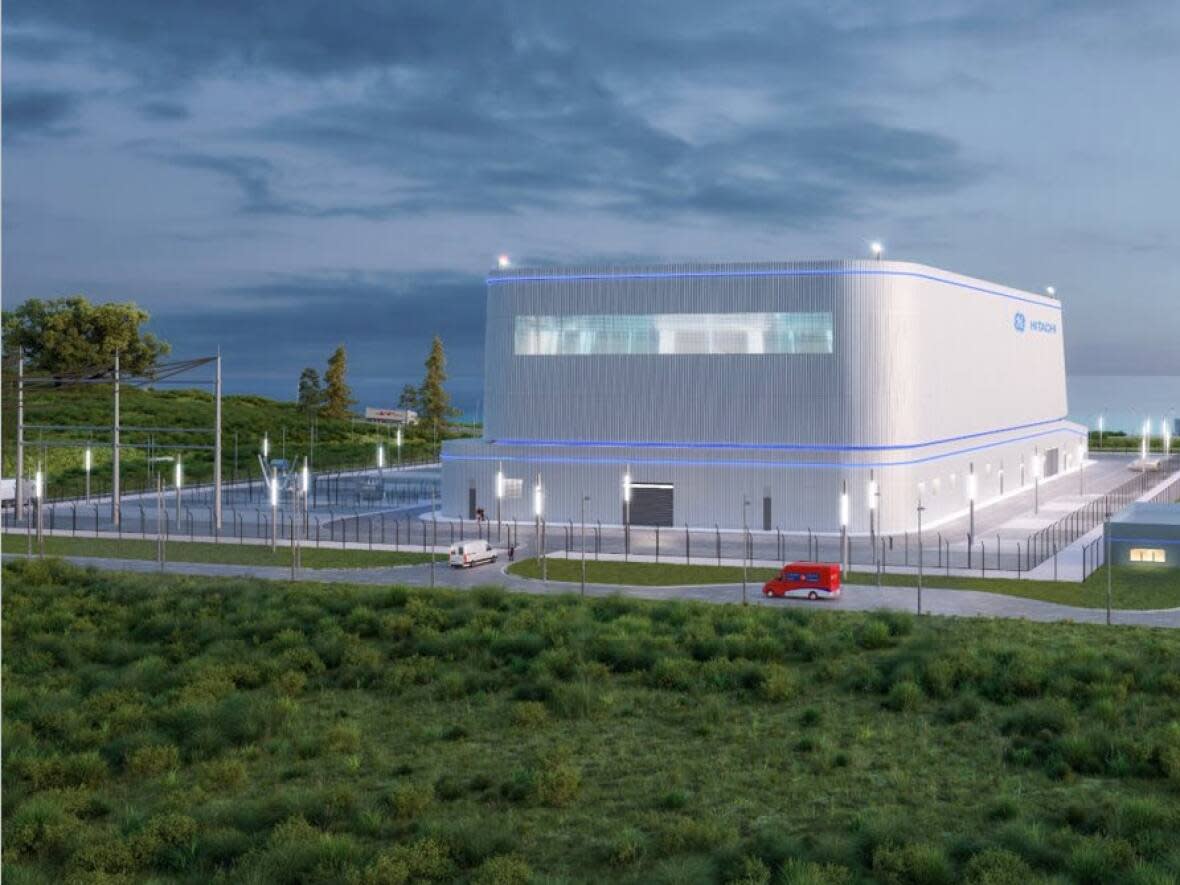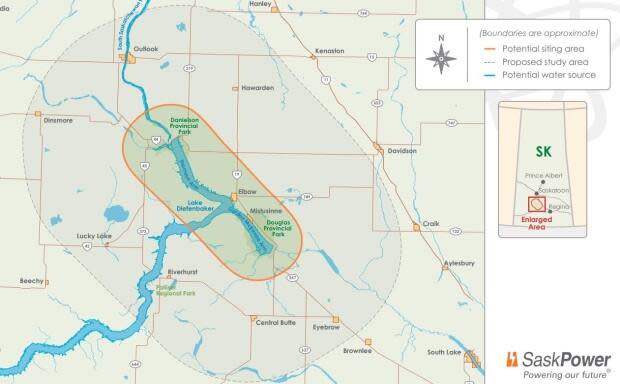SaskPower selects areas near Estevan, Elbow as potential sites for a nuclear reactor

A small, modular nuclear reactor could be located in the Estevan area or Elbow near Lake Diefenbaker, SaskPower says.
On Tuesday the Crown corporation made the latest announcement regarding the use of small modular reactors (SMRs) in the province by narrowing the site down to two potential areas.
One is near Estevan — specifically, two sites around Boundary Dam, Rafferty Dam, and another around the Grant Devine Dam.
The other area under consideration is near Elbow around Lake Diefenbaker, from Gardiner Dam to the Diefenbaker Dam.
"The Estevan area has been a very important part of SaskPower's history. Through the Boundary Dam, Shand power station producing stable, reliable baseload power for decades, to the hundreds of employees that call Estevan home," SaskPower president Rupen Pandya said
"By identifying the Estevan study region, the opportunity to continue this history is exciting.

"SaskPower has evaluated nuclear power for a long time and throughout all of these studies Lake Diefenbaker has been always been at the top of the list as one of the most technically suitable locations to potentially to host a nuclear facility."
In 2020, the Saskatchewan government announced a $4-billion plan out of the Lake Diefenbaker reservoir.

Pandya says the entire province was looked at before the decision was made.
However, the two areas needed to meet certain criteria, including proximity to a water source, existing power transmission infrastructure and the ability to support a workforce.
"SMRs are new to Saskatchewan and before SaskPower makes a decision on how to deploy this new energy force we must have an open and meaningful dialogue with the people of Saskatchewan," Pandya said.
Consultation process
A small modular reactor typically produces 300 megawatts of electricity or less — enough electricity to power 300,000 homes each year, according to the province.
Pandya says that dialogue will include consultation with local leadership, non-governmental organizations and the public.
"Engagement and consultation with Indigenous Rights holders and the public is critical to this project," he said, "and I encourage the people of Saskatchewan to reach out and engage with us on this important project."
Pandya says waste from the reactor would be stored onsite.
SaskPower said the area will be selected by 2023, with a site chosen by 2024.
However, the decision on whether to use SMR technology as part of the province's power generation mix will not be made until 2029. If it is approved, the SMR could be operational by 2035.
SaskPower says it could build one or two reactors on the chosen site. It has estimated an SMR would cost $5 billion.
Nuclear fills need for 'baseload' power
The timeline on a decision to use nuclear in the province coincides with the federal regulations to phase out coal use for power generation. Roughly 25 per cent of power generated in Saskatchewan comes from coal.
By 2030, natural gas would be the province's only "baseload" power source.
SaskPower considers SMRs part of a the baseload because it would be available all day every day.
SaskPower classifies wind and solar as "intermediate" sources of electricity generation.
The minister responsible for SaskPower, Don Morgan, said unlike provinces that use hydropower, Saskatchewan has to get creative in coming up with alternatives to coal.
"We're looking at nuclear, wind, solar and we're looking at every other reasonable option that we have," he said.
Morgan says the government will have a fallback plan if the decision is made in 2029 not to go ahead with SMRs: "We are going to make a commitment to the people of this province we are going to supply reliable baseload power, no matter what we have to do."
On Tuesday, the opposition critic Aleana Young voiced support for SMRs, but expressed concern about the potential cost and cautioned she will be watching how transparent the government and SaskPower are during the consultation process.
"This is a huge project as well as potentially a huge economic boom for communities," she said, "and there's significant public consultation that needs to be done. And as this moves forward, I wanted to make sure that we're picking the best sites for this project and any projects in Saskatchewan, and not picking winners and losers."


